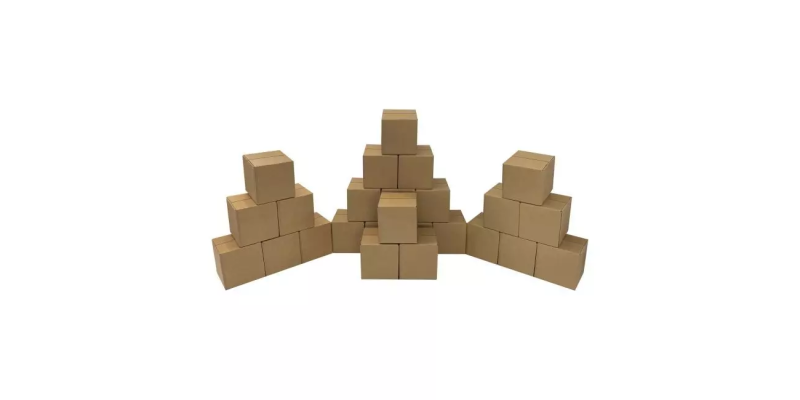One of the most important steps when preparing to ship a product, whether for business or personal use, is properly measuring the box. Accurate measurements of shipping boxes ensure that your item fits well, reducing the risk of damage and ensuring you’re charged the correct shipping rate. Here’s a straightforward guide on how to measure a box for shipping so you can send your items with confidence.
Step 1: Measure the Height, Length, and Width of the Box
Before you can determine the shipping cost, the first step is to measure your box properly. Here’s how to do it:
- Length: Measure the longest side of your box. This will typically be the edge running from one side to the other when the box is placed flat.
- Width: Measure the shorter side, perpendicular to the length. This side is often the dimension that helps determine if your box fits within certain carrier size limits.
- Height: Measure the height of the box. This refers to the distance from the bottom to the top when the box is resting on its base.
Tip: Always use the inside dimensions for your measurements, as the exterior measurements can differ due to the thickness of the cardboard.
Step 2: Calculate the Volume of the Shipping Box
The volume of your box is another important metric when it comes to shipping. Shipping carriers often use dimensional weight (also called volumetric weight) to determine the shipping costs, especially for large but lightweight boxes. To calculate the volume, simply multiply the length, width, and height:
Volume = Length × Width × Height
For example, if your box measures 10 in long, 8 in wide, and 4 in high, its volume would be 10 × 8 × 4 = 320 cubic inches.
Step 3: Measure the Girth of the Box
To further ensure your box meets shipping carrier requirements, measuring the girth is essential, especially for carriers like USPS. The girth is the total measurement around the sides of your box. To calculate the girth, add the height and width together, multiply that sum by 2, and then add the length.
Formula for Girth:
Girth = (2 × Width) + (2 × Height)
Then:
Girth Measurement = Girth + Length
For instance, if the box measures 10 in long, 8 in wide, and 4 in high, the girth would be calculated as:
- Girth = (2 × 8) + (2 × 4) = 24 inches
- Total = Girth + Length = 24 + 10 = 34 inches
This girth measurement is important for shipping and will determine whether your box can be shipped within the size limits set by different carriers.
Step 4: Understand Carrier-Specific Requirements
Different carriers have different requirements for shipping boxes, especially when it comes to size limitations and dimensional weight. For example:
- USPS: For Priority Mail, USPS limits the total length and girth to 108 inches, while for First-Class Package Service, packages can’t exceed 22 inches in length or 18 inches in height or width.
- UPS and FedEx: These carriers have similar requirements, but their size limitations may vary based on the shipping service and destination. UPS generally accepts packages up to 165 inches in length and girth combined, while FedEx has a maximum combined length + girth of 130 inches for standard ground services.
By knowing how to measure a box for shipping and understanding your carrier’s size limitations, you can avoid unnecessary fees and make sure that your package fits within the allowable parameters.
Step 5: Consider Box Types for Different Shipping Needs
Now that you’ve got the measurements down, it’s time to consider the types of shipping boxes available. Choosing the right box is just as important as measuring it. The correct box ensures that your items are protected during transit and that your shipping costs are kept reasonable. If you are wondering where to purchase shipping boxes, we have the perfect place for you—StarBoxes.
At StarBoxes, we offer a wide range of shipping boxes designed for various shipping needs. Here are some popular options:
- Corrugated Boxes—The most common shipping boxes, ideal for a range of products including electronics, clothes, and books. They come in various shipping box sizes to fit your items securely.
- Cube Boxes—These boxes are designed with equal dimensions on all sides, providing uniform protection for items that need to be packed snugly. They are perfect for shipping smaller, delicate items like electronics, collectibles, or promotional materials.
- Multi-depth Boxes—These are adjustable, meaning they can be easily resized to fit different products. These boxes are ideal if you’re shipping items of varying sizes and want a single box to accommodate multiple products without needing different sizes.
- Mailer Boxes—Compact, rigid boxes used for smaller items like documents, jewelry, or electronics. These boxes offer excellent protection while keeping the shipping costs low.
- Heavy-Duty Boxes—Built for shipping heavier items, these boxes offer more robust protection and can withstand higher weights without breaking down.
- Flat and Long Boxes—Flat boxes are perfect for lightweight, flat items like documents, artwork, or posters, providing compact protection without taking up much space. For longer items, such as pipes, rods, or large posters, long boxes offer the necessary length while ensuring security and protection during shipping. Both box types are ideal for non-bulky items that require a snug, secure fit.
Step 6: Shipping Boxes Sizes
When determining shipping box sizes, it’s essential to choose one that fits your product snugly. Overly large boxes will require more packing material, leading to increased shipping costs. If you’re not sure which size to choose, here’s a quick guide to common shipping box sizes:
- Small Boxes: 6x6x6 inches or 8x6x4 inches
- Medium Boxes: 12x12x8 inches or 14x10x10 inches
- Large Boxes: 18x18x12 inches or 20x20x15 inches
- Extra-Large Boxes: 24x18x18 inches or 30x20x20 inches
For larger shipments or bulk orders, consider double-walled boxes or heavy-duty boxes for added durability.
Final Tips for Preparing Your Box for Shipping
- Use Proper Packing Materials: After measuring your box, ensure that your item is properly cushioned with materials like bubble paper, packing peanuts, or foam inserts. Proper padding prevents damage during transit and keeps your items safe.
- Label the Box Correctly: Clearly mark the shipping label on the top of the box and ensure it's visible. If you're shipping fragile items, add a "Fragile" label to the box to alert handlers.
- Weigh the Box: After measuring and packing your box, be sure to weigh it accurately. Most shipping carriers require the weight of the package along with its dimensions to calculate the final shipping cost.
Calculate Shipping Costs
Your box’s dimensions are key in determining your shipping cost. Shipping carriers often use the dimensional weight (also called volumetric weight) for large but light packages. This means your box’s size, not just its weight, can impact the overall cost. By properly measuring the box, you can ensure that you're being charged accurately and avoid unexpected shipping fees.
Ship Smarter with the Right Box
Understanding how to measure a box for shipping and selecting the right shipping boxes is essential for ensuring a safe and cost-effective shipping process. Whether you’re shipping a small item in a mailer box, a large item in a double-walled box, or a custom-sized package, taking the time to get the correct measurements will help you avoid unexpected fees and prevent shipping delays.
Need the perfect shipping box? Choose from a wide selection of shipping boxes sizes and types of shipping boxes at StarBoxes, where quality and durability meet affordability. Let us help you find the ideal box for your shipping needs.
FAQs
Why is it important to measure a box accurately before shipping?
Accurate measurements ensure you are charged correctly for shipping and help prevent delays or extra fees due to oversized packages.
What dimensions do I need to measure for a shipping box?
Measure the shipping box’s length, width, and height.
Should I measure the inside or outside of the box?
Measure the inside dimensions, as shipping carriers use the internal space to calculate shipping costs.
What is dimensional weight, and why does it matter?
Dimensional weight is a calculation based on the volume of the box. It matters because some carriers charge based on the larger of the actual weight or the dimensional weight for large, lightweight packages.
How do I calculate dimensional weight?
Multiply the box's length, width, and height to get the volume, then divide by the dimensional weight divisor (usually 166 for inches or 5000 for centimeters) to get the dimensional weight.
How can I reduce shipping costs related to box size?
Use appropriately sized boxes that snugly fit your items, minimize unused space, and choose compact box types to reduce dimensional weight and avoid unnecessary costs.







